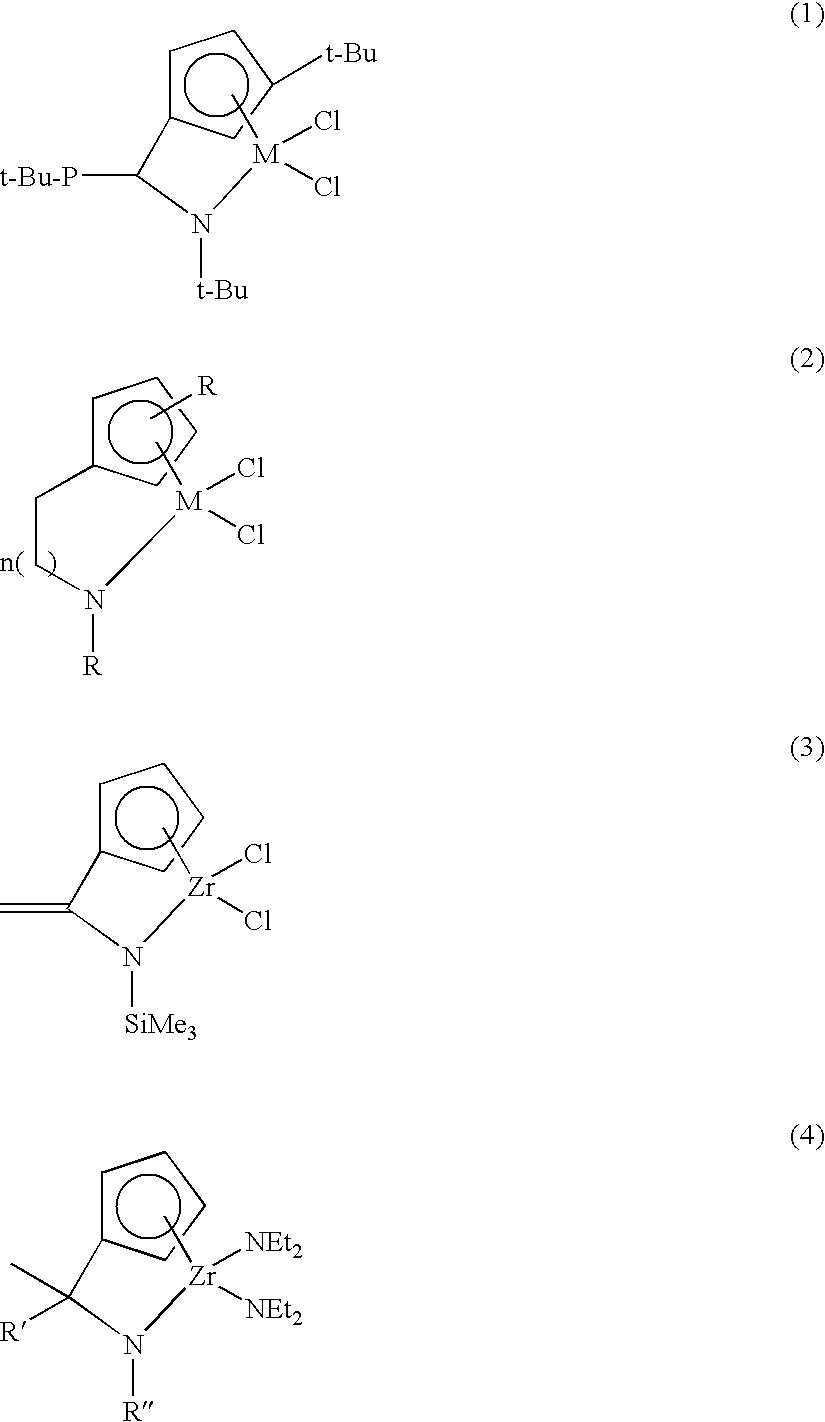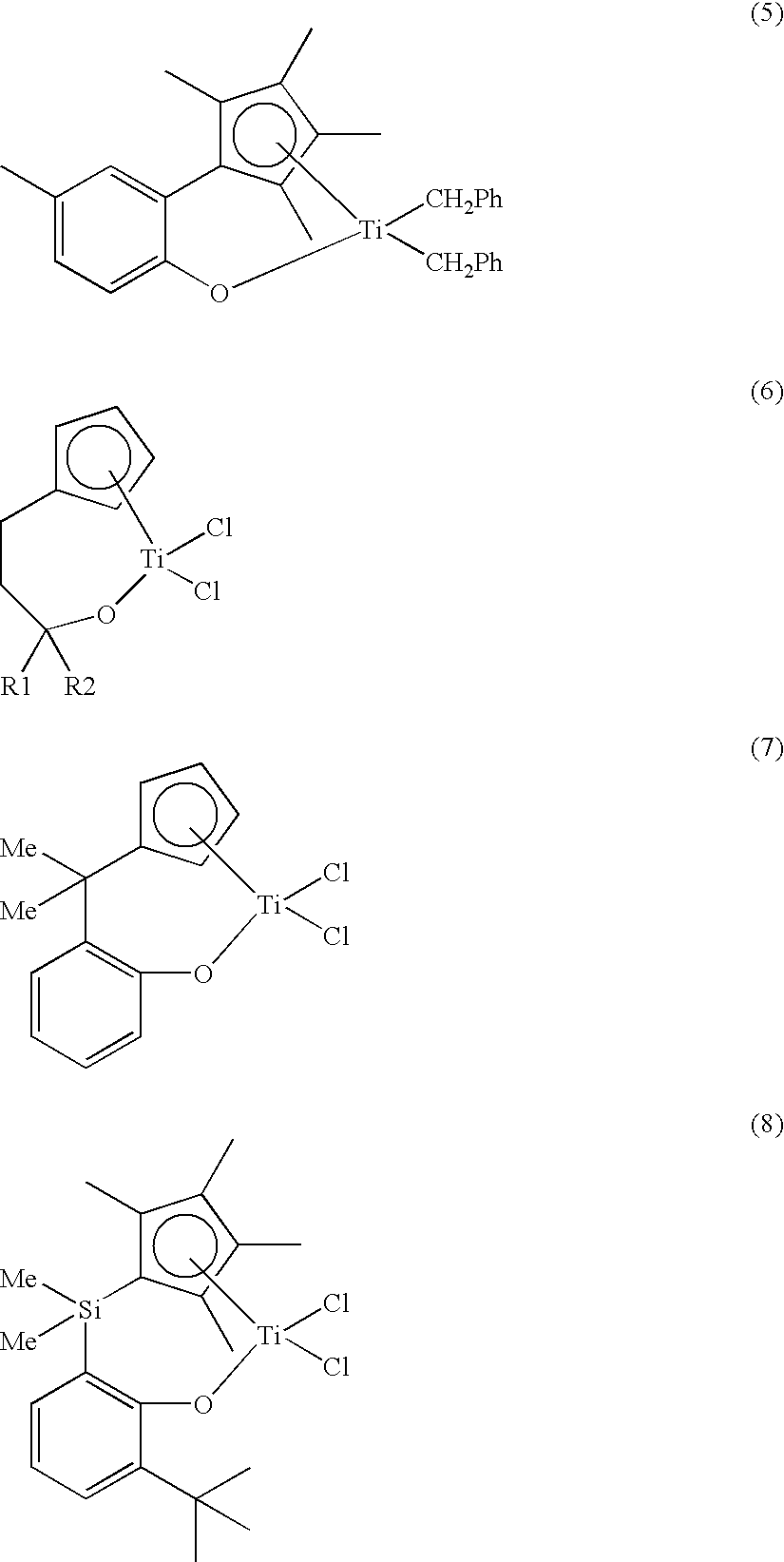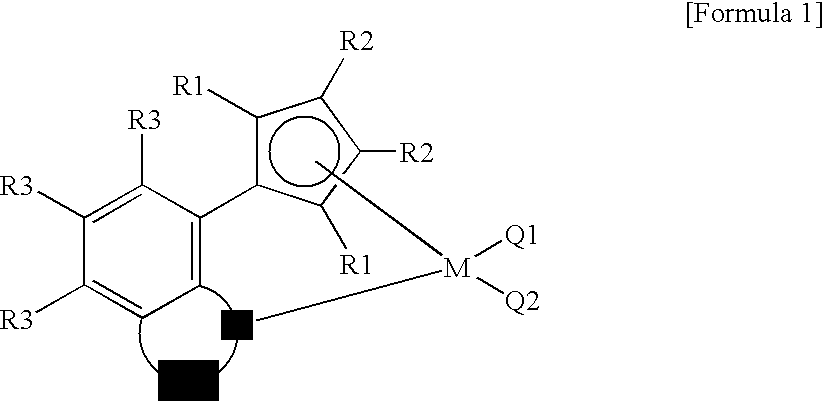Supported catalyst for olefin pollymerization using transition metal compound having thenylene-bridge, method for preparing the same, and method for preparing polyolefingusingthed same
a technology of transition metal compound and supported catalyst, which is applied in the direction of catalyst activation/preparation, physical/chemical process catalyst, chemical/physical process, etc., can solve the problems of complex reaction process, low activity or poor copolymerization performance of compound, etc., and achieves high activity and high reactivity
- Summary
- Abstract
- Description
- Claims
- Application Information
AI Technical Summary
Benefits of technology
Problems solved by technology
Method used
Image
Examples
preparation example 1
[(6-methyl-1,2,3,4-tetrahydroquinolin-8-yl)trimethylcyclopentadienyl-η5,κ-N]titanium dichloride compound
[0067]6-methyl-1,2,3,4-tetrahydroquinoline (1.16 g, 7.90 mmol) was dissolved in carbon tetrachloride (4 mL), and cooled to −20° C. Solid N-bromosuccinimide (1.41 g, 7.90 mml) was slowly added thereto, the reaction temperature was raised to room temperature, and further reacted for 5 hours. The obtained compound was purified by column chromatography using an MC and hexane (v:v=1:1) solvent, and light yellow oil was obtained (0.71 g, 40%).
[0068]Degassed DME (dimethylether) (21 mL) and distilled water (7 mL) were added to the mixture of 2,3-dimethyl-5-oxocyclopent-1-enylboronic acid (1.27 g, 8.26 mmol), Na2CO3 (1.25 g, 11.8 mmol), Pd(PPh3)4 (0.182 g, 0.157 mmol), and the prepared 8-bromo-1,2,3,4-tetrahydro-6-methylquinoline (7.87 mmol), and heated at 95° C. overnight. The reaction solution was cooled to room temperature, and extracted from an ethylacetate solvent (50 mL) twice. The o...
preparation example 2
[(1,2,3,4-tetrahydroquinolin-8-yl)tetramethylcyclopentadienyl-η5,κ-N]titanium dimethyl compound
[0075]1,2,3,4-tetrahydroquinoline (957 mg, 7.185 mmol) was dissolved in THF (10 ml), and then stirred at −78° C. for 30 minutes. Then, n-BuLi (2.87 ml, 7.185 mmol) was injected with a syringe under nitrogen atmosphere [yellow suspension]. After the solution was sufficiently stirred for 3 hours, and degassed at −20° C. Then, the solution was cooled to −78° C., and CO2 gas was injected thereto (its color changed to white close to transparency). The temperature was raised to −20° C., then the remaining CO2 gas was removed under vacuum for 1 hour, and tert-BuLi (5.07 ml, 8.622 mmol) was added thereto (its color changed to red). While the temperature was maintained at −20° C., and the solution was sufficiently stirred for 2 hours. Then, a 0.33 M CeCl3.2LiCl solution (26.1 ml, 8.622 mmol) dissolved in THF and tetramethyl cyclopentenone (1.182 g, 8.622 mmol) were introduced under nitrogen atmosph...
examples 1 to 3
Preparation of Supported Catalyst for Olefin Polymerization
PUM
| Property | Measurement | Unit |
|---|---|---|
| temperature | aaaaa | aaaaa |
| density | aaaaa | aaaaa |
| temperature | aaaaa | aaaaa |
Abstract
Description
Claims
Application Information
 Login to View More
Login to View More - R&D
- Intellectual Property
- Life Sciences
- Materials
- Tech Scout
- Unparalleled Data Quality
- Higher Quality Content
- 60% Fewer Hallucinations
Browse by: Latest US Patents, China's latest patents, Technical Efficacy Thesaurus, Application Domain, Technology Topic, Popular Technical Reports.
© 2025 PatSnap. All rights reserved.Legal|Privacy policy|Modern Slavery Act Transparency Statement|Sitemap|About US| Contact US: help@patsnap.com



